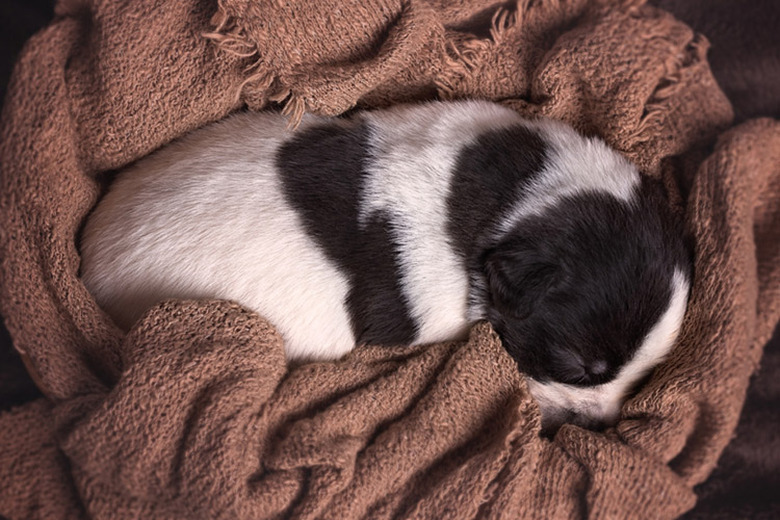How To Take Care Of A Puppy That Can't Nurse
After birthing a litter of puppies, a mother dog nurses her little ones for about four to six weeks. However, there are a number of reasons why a mother dog might not be able to nurse one of her puppies — from a puppy being too weak to the mother having an insufficient milk supply. Once you discover a puppy is unable to nurse, taking proper care of him will help him survive and thrive.
Inspecting the Litter
After all the puppies have been birthed and have had a chance to begin nursing, inspect the litter for weaker or smaller puppies. Watch for puppies who are struggling to get to the mother to nurse, who don't latch onto the mother for long or who are outright rejected by the mother. You can look for tell-tale signs of a malnourished puppy — losing or not gaining weight, persistent crying or bloating.
Isolating the Puppy
Isolating a puppy who is unable to nurse is important to keeping it warm, well-fed and healthy. Carefully remove the puppy from the mother and litter, being sure to not upset the mother or disrupt the litter. (If the mother becomes agitated, leave and try again later.) A newborn puppy should be handled as little as possible, so quickly transfer it to a new box that has plenty of blankets and a heating pad underneath the blankets set to medium. Keep the puppy's box at a temperature of 75 degrees. Once the puppy is warmed, it can be fed.
Buying Food Supplement
Since you will be having to supplement the mother dog's milk, you will have to purchase a milk replacer formulated for puppies. Cow's milk or goat's milk is not an acceptable replacement, as the fat, protein and lactose levels are not suited for a puppy. Typically, liquid milk replacers are ready to serve, while powdered milk replacers require some extra preparation. For powdered options, follow the manufacturer's instructions for reconstitution carefully.
Feeding the Puppy
Fill a baby bottle with the recommended amount of milk replacer. Hold the puppy in a horizontal position; this is the natural position for a puppy to nurse and will help prevent choking. Gently insert the bottle nipple into the puppy's mouth, wiggling it some to release a few drops of milk. The puppy will begin to suck on the bottle, taking in the milk replacer. The puppy will need to be fed a set amount of milk replacer every two hours, even throughout the night. This is crucial to the puppy's health and survival. When the puppy is around 4 weeks of age, it can begin to transition from nursing to eating solid, dry food.
By Jennifer Kimrey
References
Chai Online: Dogs — Orphaned Puppies
Yahoo! Voices: Caring for Newborn Puppies — Failure to Thrive
Collie Expressions Magazine: The Newborn Nursery
Hartz: Bottle Feeding the Newborn Puppy
Mary C. Wakeman: Feeding Newborn Puppies
AskABreeder.com: Dehydrated Puppies — My Puppies aren't Getting Enough Milk (Milk for Puppies)
ASPCA: Newborn Puppy Care
PetMD: Weaning Puppies from their Mother
About the Author
Jennifer Kimrey earned her bachelor's degree in English writing and rhetoric from St. Edward's University in Austin, Texas. She's a regular contributor to the "Houston Chronicle" and her work has appeared on Opposing Views Cultures, The Austin American-Statesman, The Red Vault, The Western Vault and various other websites and publications.
